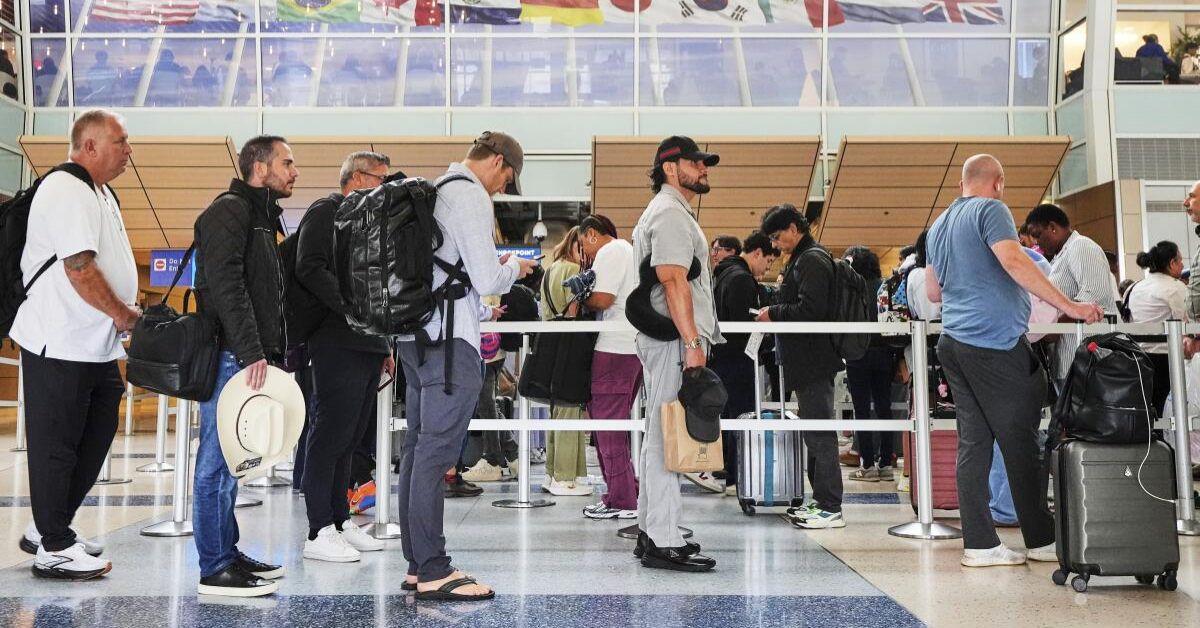Washington, D.C. – The United States is witnessing a decline in international tourism, with experts indicating that this downward trend is unlikely to reverse anytime soon due to ongoing geopolitical tensions and policy decisions. Data from the National Travel and Tourism Office highlights a drop of over 3 million overseas visitors in the first seven months of this year compared to the same period last year, sparking concerns about the future of the U.S. travel industry.
The decrease includes travelers from all nations except Mexico and Canada, marking a significant shift in U.S. tourism dynamics. Coupled with a simultaneous dip in tourists visiting from Canada and surprising travel pattern reversals, the phenomenon signals a broader challenge for American hospitality and tourism sectors.
Impact of Political Climate on International Tourism
Experts and local officials widely attribute the decline in overseas visitors to the current political environment shaped under President Donald Trump’s administration. Key factors include:
- Implementation of sweeping global tariffs that have strained international relations.
- A tightened immigration stance marked by rigorous visa approval processes and increased immigration raids.
- Renewed travel bans targeting several African and Middle Eastern countries.
- Controversial rhetoric and repeated threats concerning territorial acquisitions such as Canada and Greenland.
Patrick Kaler, CEO of the tourism organization Visit Buffalo Niagara, expressed concerns about the impact of rhetoric on travel trends, stating,
“To see the traffic drop off so significantly, especially because of rhetoric that can be changed, is so disheartening.”
Projected Declines and Economic Implications
Predictions by major travel and economic organizations underscore the severity of the situation. According to the World Travel & Tourism Council (WTTC), the U.S. is uniquely positioned among 184 countries studied as the only nation where foreign visitor spending is projected to decline in 2025.
Julia Simpson, WTTC president and CEO, emphasized the risks, commenting,
“The world’s biggest travel and tourism economy is heading in the wrong direction. While other nations are rolling out the welcome mat, the U.S. government is putting up the ‘closed’ sign.”
Additionally, the travel research firm Tourism Economics forecasts an 8.2 percent drop in international arrivals by 2025, citing ongoing travel booking trends which show a sustained slowdown in inbound tourism through midsummer.
Factors Contributing to the Tourism Downturn
Beyond geopolitical tensions, several intertwined factors are exacerbating the decline in international visitors:
- Political uncertainty domestically and internationally impacting traveler confidence.
- Rising travel costs, including airfare and accommodation expenses.
- Perception issues created by aggressive immigration enforcement and restrictive policies.
Deborah Friedland, managing director at Eisner Advisory Group, remarked on perceptions shaping reality:
“Perception is reality.”
Regional Travel Trends and Exceptions
While the overall trend points to declining international tourists, exceptions exist. Some countries have shown increased travel to the United States, including:
- Argentina
- Brazil
- Italy
- Japan
Meanwhile, Canadian tourism figures reveal a unique dynamic where more Americans traveled into Canada in June and July than Canadians entering the U.S., marking a nearly two-decade first aside from pandemic months.
For comprehensive statistics and further insights, read more on this topic at NewsBreak.
Looking Ahead: Challenges and Opportunities
The U.S. travel sector faces considerable challenges ahead if current policies and geopolitical tensions persist. Experts suggest that reversing the decline in international tourists will require diplomatic improvements, easing of travel restrictions, and efforts to rebuild the country’s global image as a welcoming destination.
Key Takeaways:
- International visitors to the U.S. dropped by over 3 million in the first seven months of the year.
- The U.S. is the only major travel economy expected to see foreign visitor spending decline in 2025.
- Political decisions, immigration policies, and tariffs heavily influence traveler perceptions.
- Some countries like Argentina and Japan buck the trend with increased visits.
- Cross-border travel between the U.S. and Canada shows an unusual pattern favoring inbound travel to Canada.













